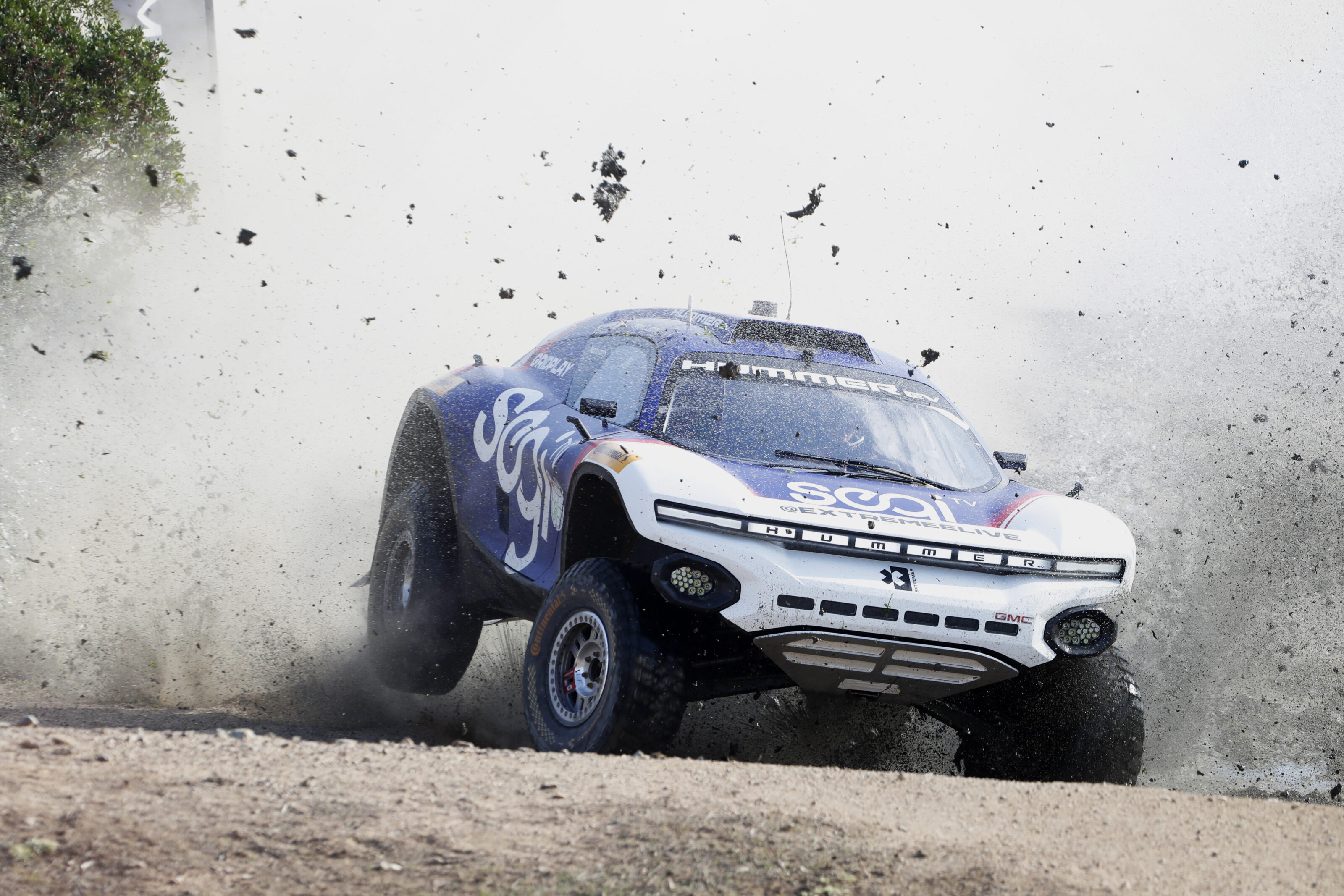Convincing someone that electric vehicles are exciting is not hard. Chuck them the keys to a Rimac, point them at the nearest circuit and you can be certain they’ll be flying the zero-emissions flag for the rest of their days. But the conversion becomes a little more challenging if you don’t have access to one of the world’s fastest EVs and a private race track – and it’s made harder still by motorsport.
Most car manufacturers are transitioning into majority (if not exclusively) purveyors of EVs, claiming that the brightest future is electric. And yet, when the weekend rolls around, race tracks are a cacophony of combustion. At worst it’s hypocritical; at best it’s simply inconsistent.
Either way, petrol power in motorsport is damaging the message that battery is best.
This awkward paradox was sitting uncomfortably with Spanish entrepreneur and Formula E founder Alejandro Agag who picked up the phone to former racer Gil de Ferran and hatched an extraordinary solution – Extreme E; a revolutionary racing series that has categorically shattered the traditional motorsport model as we know it.
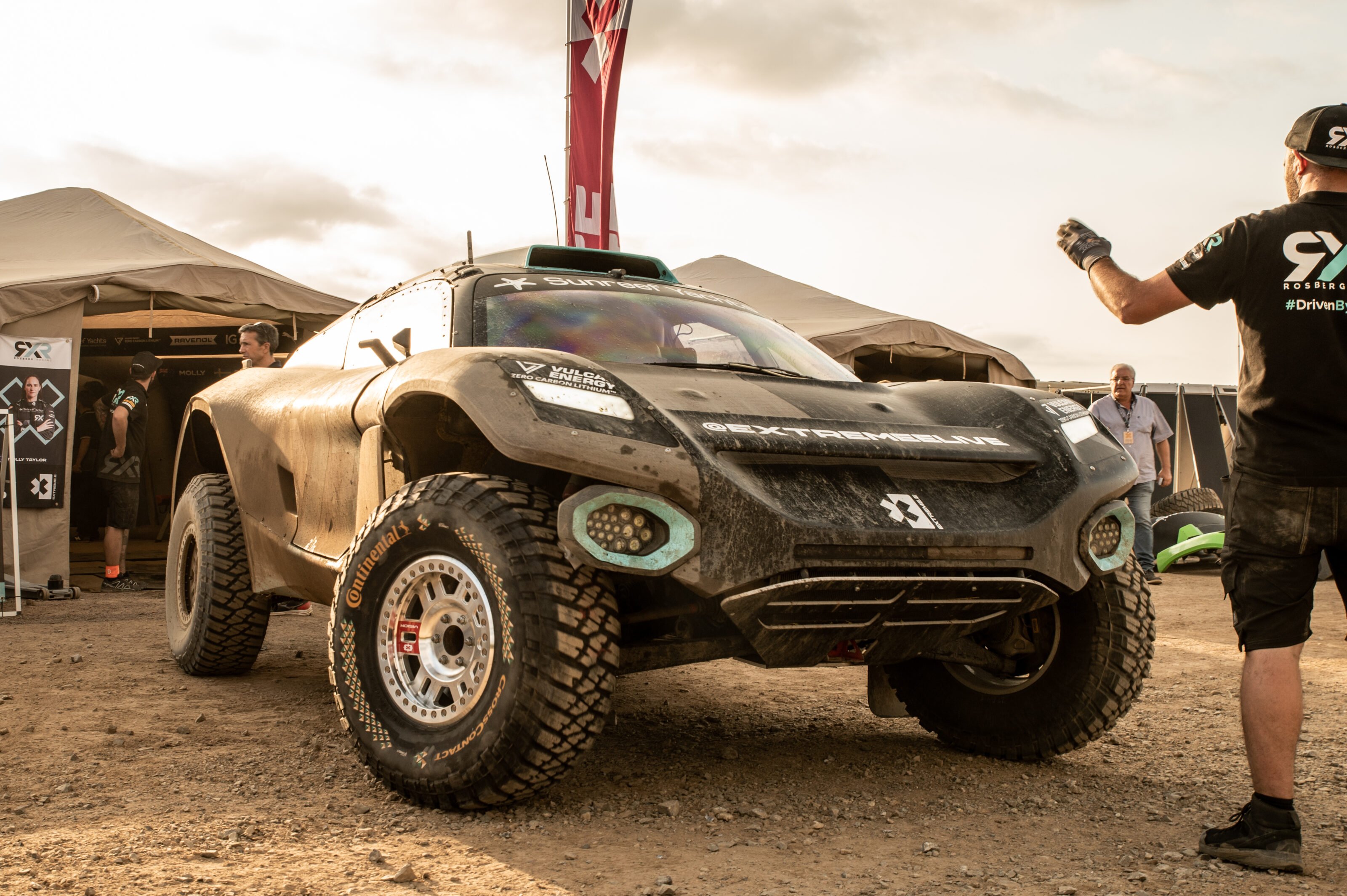
Like its circuit-bound sibling series Formula E, Extreme E is an all-electric competition, but that’s just the start of its mould-breaking approach. In a bid to shrink its carbon footprint as much as possible, the fleet of race cars are not flown between each location around the world, but loaded onto the St Helena – a retired mail ship that once served the island of the same name. The 105-metre vessel also serves as accommodation for the crews in remote locations and even has its own laboratory to conduct scientific research in the various race sites around the world.
Racing venues are selected in regions impacted by climate change, while the Legacy Program provides social and environmental support long after the racers have gone.
Aside from the environmental awareness, Extreme E is also addressing the gender imbalance in motorsport – of each two-person driver pairing, one must be female. It’s this holistic review of how global motorsport works that is drawing significant attention and the reason I’ve arrived at a NATO base in the south of Sardinia for a look behind the scenes. What awaits is extraordinary.
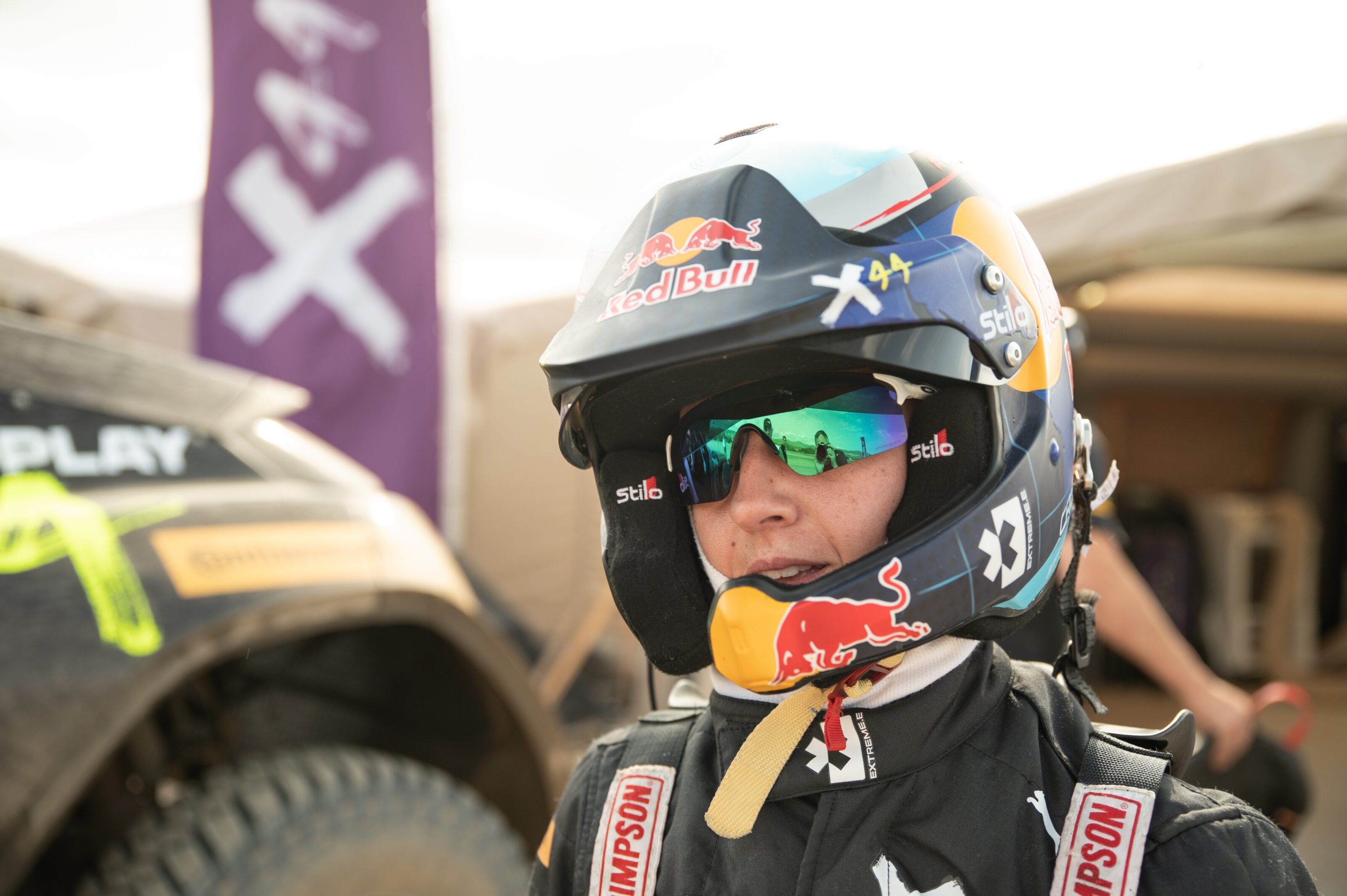
Just a few weeks prior, this was an expanse of shell-scarred heathland used for tank battalion target practice, but today it has been transformed into a tiny motorsport village. A row of ingenious inflatable tents provides the service park and garages while more conventional temporary structures have popped up to create catering, operations and media centres.
At the top of a nearby hill, infinitely more palatial and luxurious canvas tents have formed an oasis for the VIPs and sponsors. General admission is not an option (the carbon emissions generated by spectators traveling from miles around deemed not in keeping with the Extreme E mantra) but an exception is made for those who are footing most of the bills.
The ambiance is a strange combination of natural disaster without the cholera; Fyre Festival without the fraud. Unaccompanied access to the site itself is not allowed; instead of our trusty Cupra Formentor, photographer Tom and I are loaded into an Iveco VM 90 military truck and ferried out across the plains.
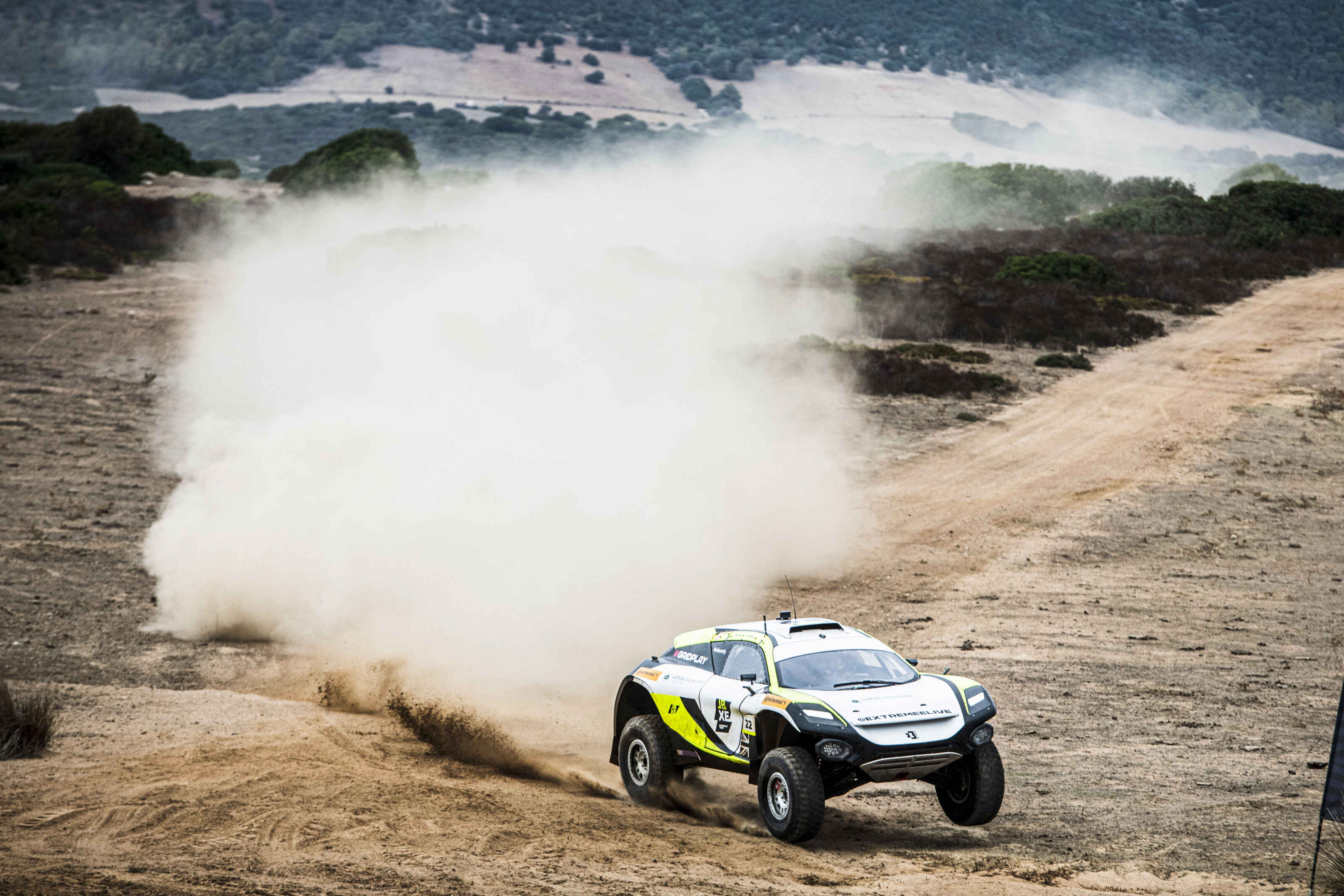
We’re almost immediately caught by a convoy of AAV-7 amphibious tanks blasting along the trails. They’re not after us but it’s a deeply intimidating moment. Together with the hot, dust-filled cabin and bone-shaking ride of our truck, I finally feel like one of those ‘proper’ journalists who file from war zones.
Crashes, scuffles and rolls are common and often big, with cars going wheel-to-wheel and bumper-to-bumper from the start line
The short trip along a network of trails illustrates exactly how tough the racing will be. The cars must negotiate two laps of a set off-road track measuring approximately 10km but the course is not groomed or prepped in any significant way – similar to rally raid competitions. In addition to the relatively short distance however, Extreme E differs with up to five cars starting simultaneously, and the driver must ‘switch’ with their teammate at the end of the first lap.
The drivers have 45 seconds to complete the swap – any longer and it eats into the lap time offering a potential advantage to the other teams. It’s one of many ways a race can suddenly evolve and flip everything on its head – literally.
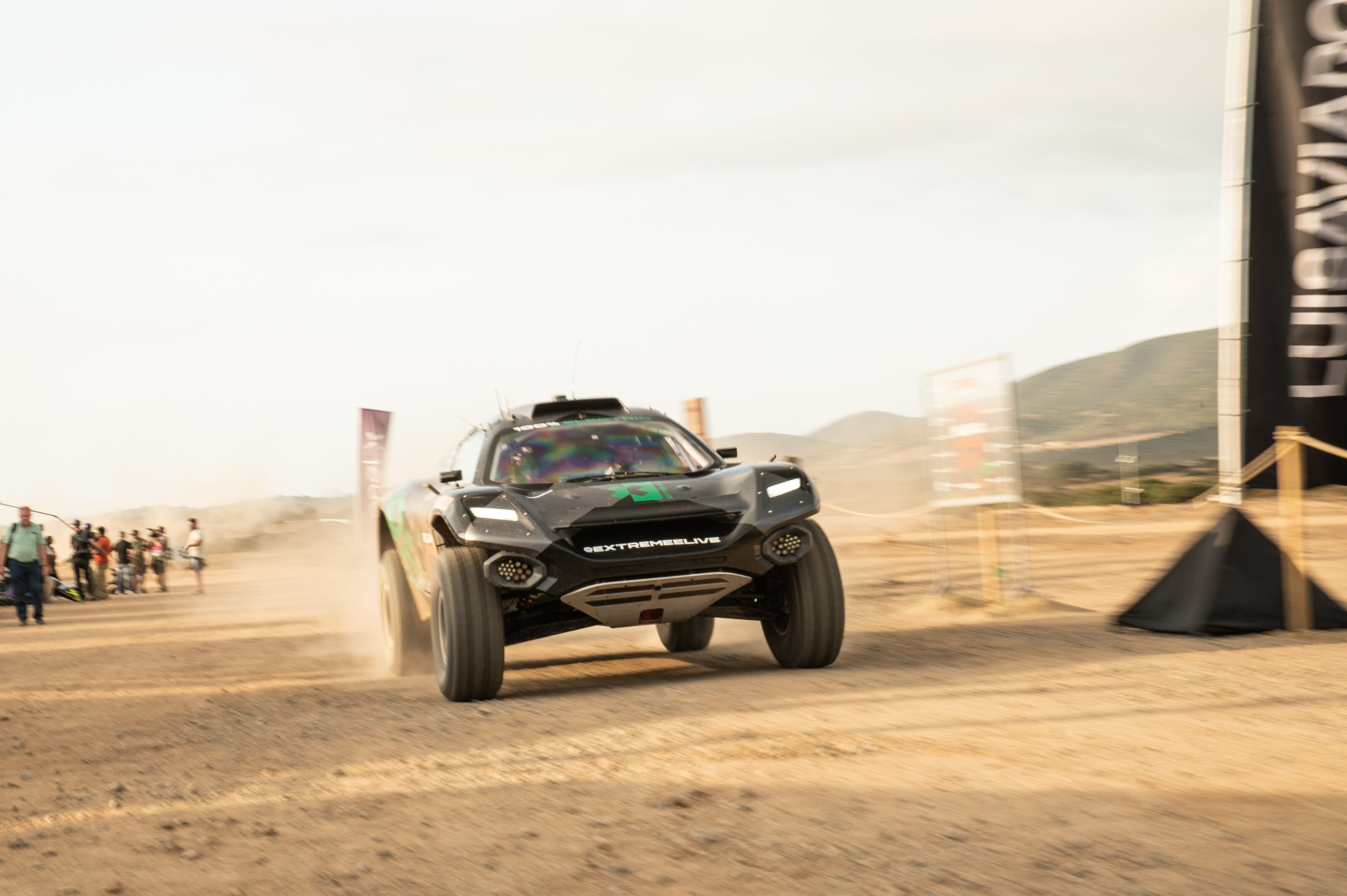
Crashes, scuffles and rolls are common and often big, with cars going wheel-to-wheel and bumper-to-bumper from the start line. Watching the two-tonne racers dash from the start has much of the aggression of Rallycross but with a backdrop that’s so naturally stunning it verges on distracting.
The first race dubbed the Desert X Prix took on the towering sand mountains of Al-’Ula in Saudi Arabia; after that, Senegal provided the location for the scorched Ocean X Prix. Next, the series headed from the heat to the cold of Greenland’s rugged and hostile landscape for the Arctic X Prix before the Sardinia Island X Prix.
Actually, Patagonia and the Amazon were originally locked as the final two locations but the unfolding COVID-19 pandemic forced organisers to find alternatives at desperately short notice. And when you need to establish an entire community in just days there’s one organisation that specialises.
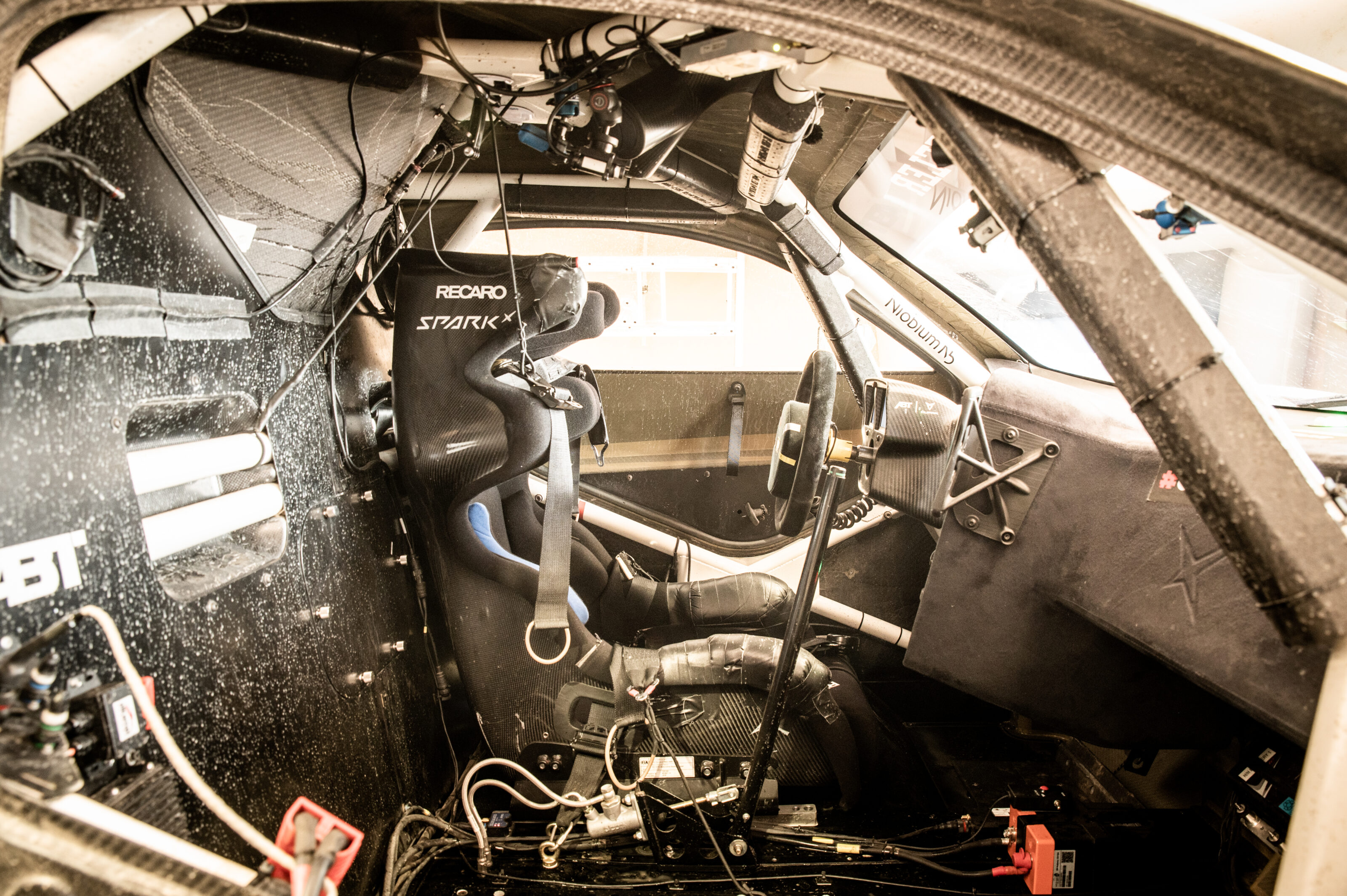
It’s no coincidence the final two rounds of Extreme E were hosted by the military. The combined efforts of Extreme E’s global roadshow and NATO were almost as impressive as the Sardinian surroundings. From the slick TV and web broadcast, Extreme E might seem like a simple matter of dumping some SUVs in the middle of nowhere and lighting the touch paper but there is a vast amount that never makes it to the screen.
When organisers realised the local wildlife was getting a little too close for comfort, the army scrambled troops and erected a temporary perimeter fence, which might be relatively easy if your event is a farmer’s market but for Extreme E it meant constructing about eight kilometers of temporary fence – in two days.
A fleet of about 30 coaches parked apparently idle was another example. The explanation? If an electrical storm strikes this open plain there’s nowhere to go so the convoy of buses were hired as mobile Faraday chambers for every person on site just in case the weather turned as lively as the cars. Other signs of military muscle included a Bell Huey medevac helicopter. Its pilots took great pleasure in departing each day via a very, very low pass of the service park.
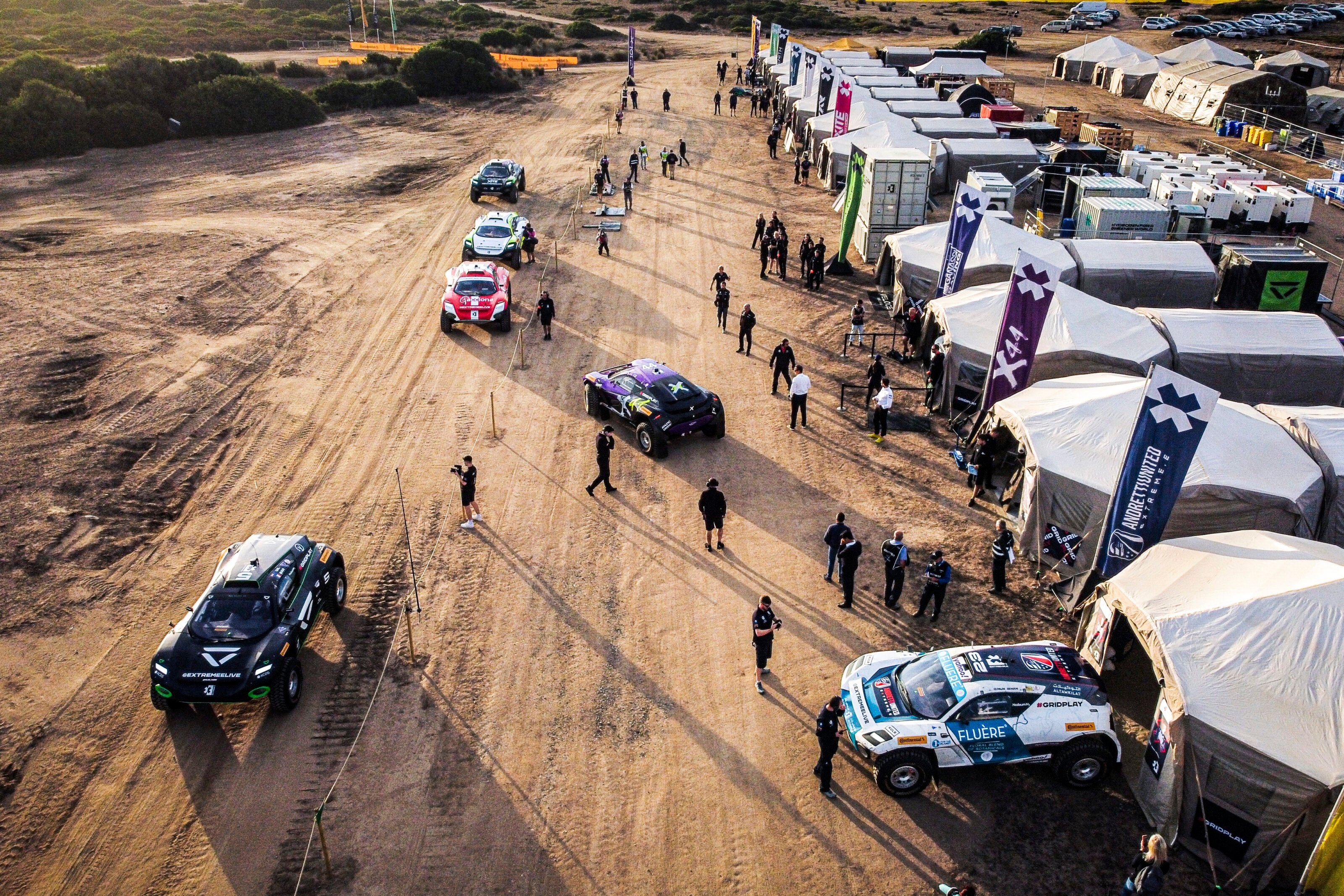
It doesn’t take long wandering the canvas alleys to find more evidence this series is radical in almost every way. Electricity for the cars is generated on-site using a 40kW fuel cell, while the hydrogen required is even manufactured and stored on site using cutting-edge nickel-hydride electrolysers. Any surplus power is either stored or fed into the site grid to power other electrical systems and supplemented by solar banks.
In one of the garages there’s another confronting reminder that these cars are different. Each team has special extraction kits used to remove a driver from the car if a short circuit is suspected following a crash. Small LEDs on the tail and dashboard of each car illuminate green when the cars are live but safe, but it they should change red at any point there’s a chance the massive battery is feeding power somewhere it shouldn’t.
Under these troubling circumstances, the drivers are trained to stay in the vehicle until an extraction team arrives and, if that’s not possible, jump from the vehicle without touching the floor.
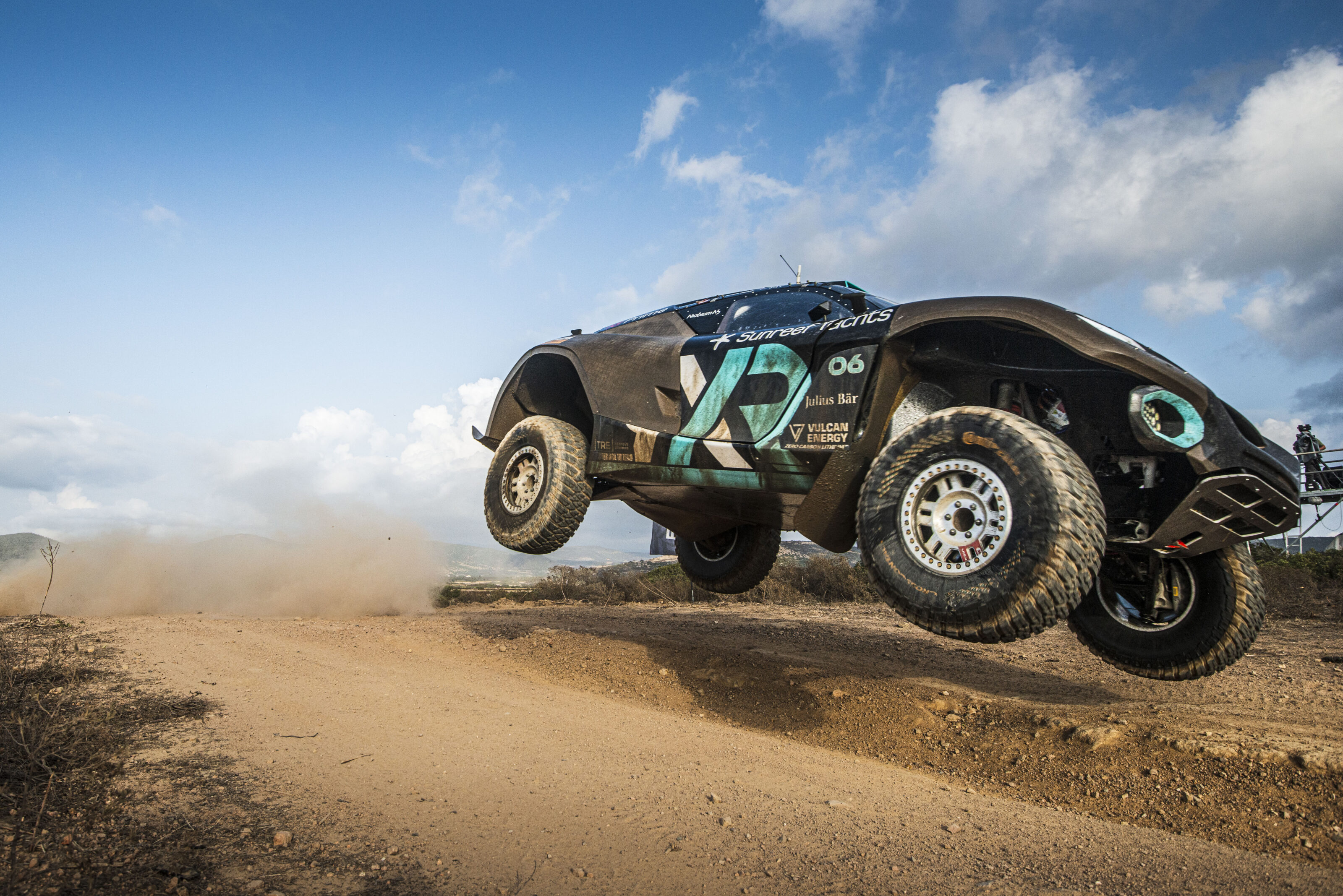
The cars are an example of not just pioneering technology, but the result of an amazing engineering collaboration. If the Odyssey 21 were to wear a bonnet badge it would be Spark Racing Technology – the French EV specialist that developed and built the fleet of off-road racers. But they didn’t do it alone.
Niobium N5 provided the spaceframe chassis constructed using its lighter, stronger but small-carbon-footprint steel. The 54kWh lithium-ion battery is courtesy of Williams Advanced Engineering and is similar to the unit used in the Formula E cars. Continental developed a specific tyre for the series with two compounds on offer depending on the conditions. Even the bodywork is made using Bcomp flax fibre composite for a shell that’s tough but green.
The exact cost of each car has never been officially confirmed but the general consensus seems to be around the €1,000,000 mark (A$1.6m).

When I finally get to explore one of these extraordinary machines it’s a little overwhelming. In photographs, there’s something insect-like about the Odyssey 21, but in the metal it’s decidedly paleolithic and absolutely massive. Measuring 2.3 metres wide and more than 1.8 metres tall, the Odyssey 21 has an incredible presence, but their almost-silent creeping around in the service area rather than barking with race engines almost makes them more unsettling and unnerving. They certainly deserve respect.
The AWD powertrain packs 400kW from a pair of electric motors, while a complete car weighs in at 1780kg for roughly the same power and weight as a Nissan GT-R, but with 385mm of suspension travel and tyres almost a metre in diameter.
As the nine different teams start completing practice and qualifying laps, it becomes clear what the bundle of zero-emissions technology is capable of. Zero to 100km/h acceleration is said to be around 4.5 seconds, but it’s hugely variable and dictated by the surface. Either way, there’s something about the way these monsters take off that doesn’t look possible.
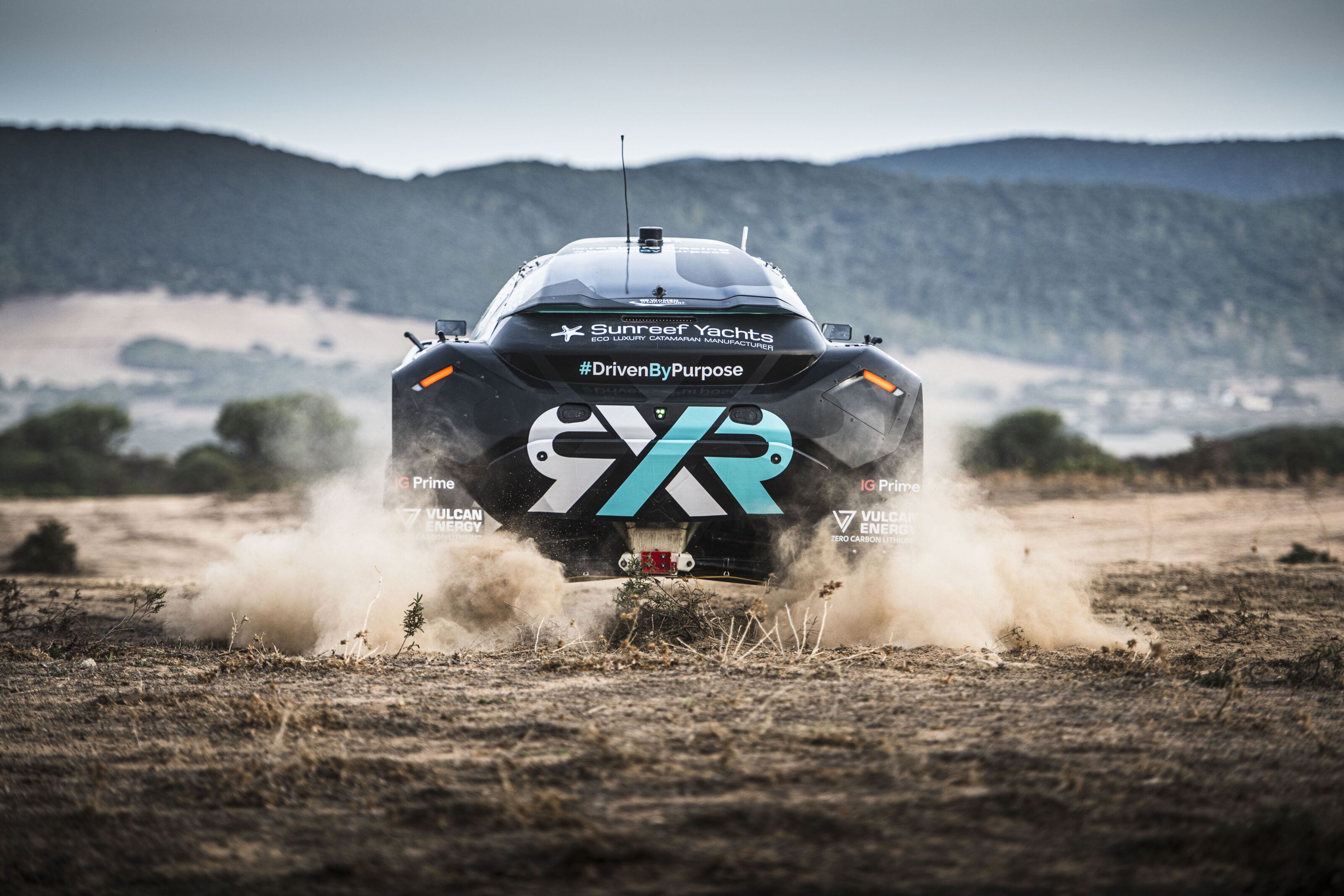
As they slam into the first course obstacles, the full range of suspension travel and tyre deflection becomes apparent. Despite the heavy-duty mechanicals, the Odyssey 21 can still suffer from the battering. Fragile steering arms and PAS pumps as well as a strange powertrain bug that causes a power outage after very heavy landings are examples of gremlins Spark are working hard to resolve.
When all is going well however, it’s a spectacle to watch the drivers wrestling with the SUVs like rodeo horses. The absence of petrol noise and smell is initially obvious but it’s surprising how quickly it becomes unmissed. There’s a cool whine from the motors and gearboxes, but the roar and rumble of tortured tyres drowns it out and the intensity of the racing is more than enough to distract an audience from the lack of ‘traditional’ character. When you throw in several other cars on track at the same time the racing becomes even more captivating.
With a huge range of skills and backgrounds brought by the pool of 18 drivers, strategy on the track becomes a critical part of each race, while the unforgiving and unpredictable nature of the course throws an extra variable into the mix.
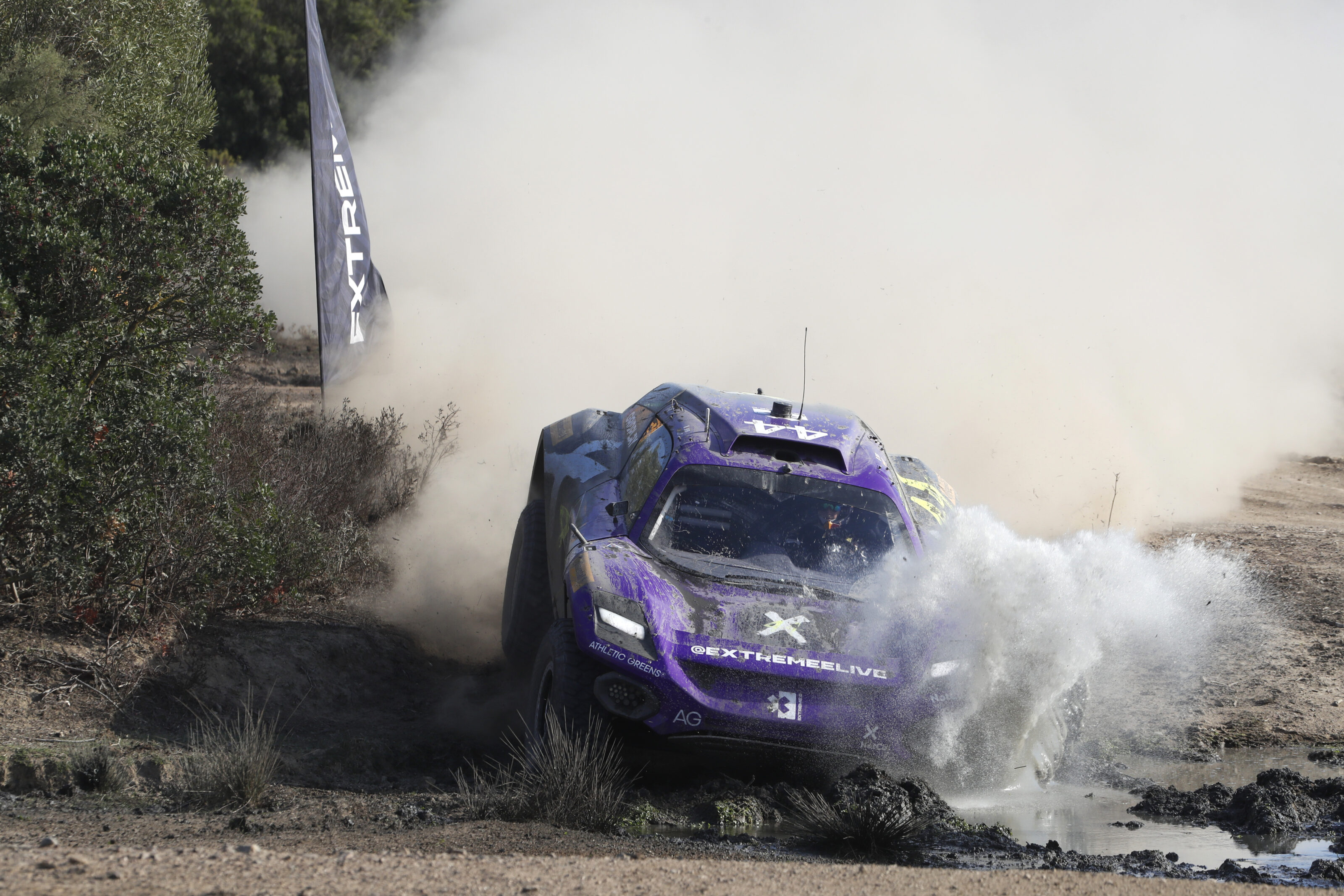
In its inaugural year, Extreme E has demonstrated it has the ingredients to be a successful and long-standing championship that appeals to petrolheads and voltnuts alike, as well as those who have only a limited interest in motorsport. It bears virtually no similarities to any other championship on the planet. The recipe certainly isn’t perfect yet – including the holy grail of self-sustainable electricity for the entire site – but there’s no point criticising Extreme E by comparing it to any other category because it is without peer, which is an insanely bold feat to achieve.
After the drama in Sardinia, this incredible off-road electric circus headed to England for the final Jurassic X Prix round, where team RXR, Australian driver Molly Taylor and teammate Johan Kristofferson took out the title as inaugural champions.
The historic chunk of ‘silverware’ (it’s actually 3D printed from recycled plastic) will forever sit proudly in the trophy cabinet. But with a unique racing series that seeks to make electric vehicles more exciting, serves as an ambassador for equality in motorsport, and helps motor racing tread more lightly on the planet, everyone wins.
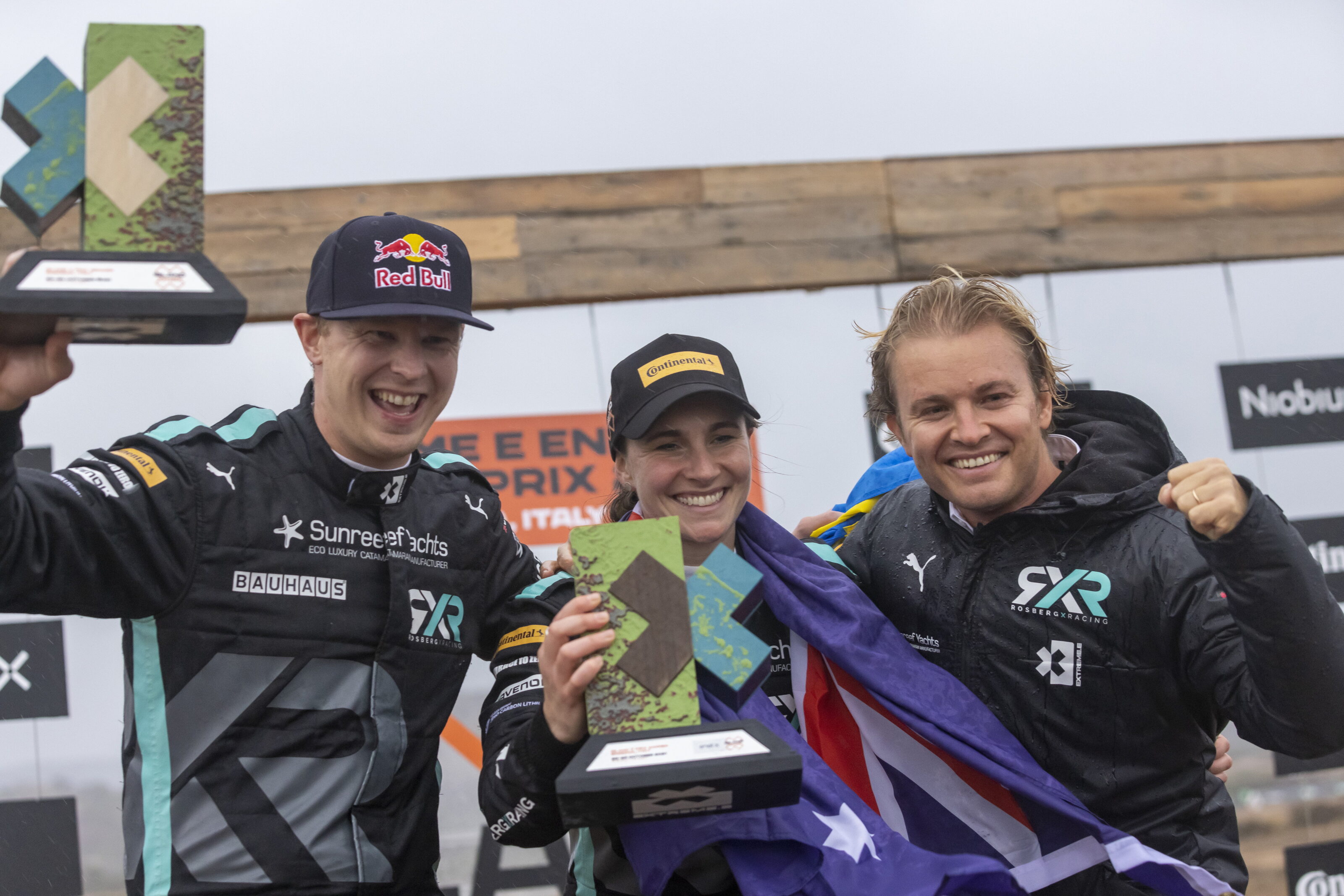
The field: Formula Extreme owners, drivers and incumbents
Rosberg X Racing (RXR)
Founded by 2016 F1 champion turned eco-entrepreneur Nico Rosberg, RXR is the inaugural winner of the 2021 championship. Molly Taylor, 2016 Australian Rally Champion, is the only Australian driver to compete in the championship, while teammate Johan Kristofferson comes to the squad with four World Rallycross championship titles.
X44
Continuing the F1 ace theme, X44 was formed by seven-times F1 champion Lewis Hamilton and is run by three-times WRC champions Prodrive. Driver Cristina Gutierrez was the first Spanish woman to enter the gruelling Dakar rally in 2017 and she joined forces with nine-time WRC champion and all-round driving legend Sebastien Loeb.

JBXE
JBXE brings yet more Formula 1 heritage to the Extreme E series via founder Jenson Button. Button drove in the first round of the Extreme E tournament but elected to hand over the reins for subsequent races. Instead, the all-Swedish driver team is formed by circuit and Rallycross driver Mikaela Ahlinkottulinsky and fellow Rallycross competitor Kevin Hansen.
Andretti United
Created by combining two established motorsport authorities, Andretti United joined Andretti Autosport and United Autosports, bringing together a diverse range of racing experience including Indycar, Formula E, World Endurance and Le Mans. European Rally Championship Ladies’ champion Catie Munnings pairs with 2019 World Rallycross champion Timmy Hansen.
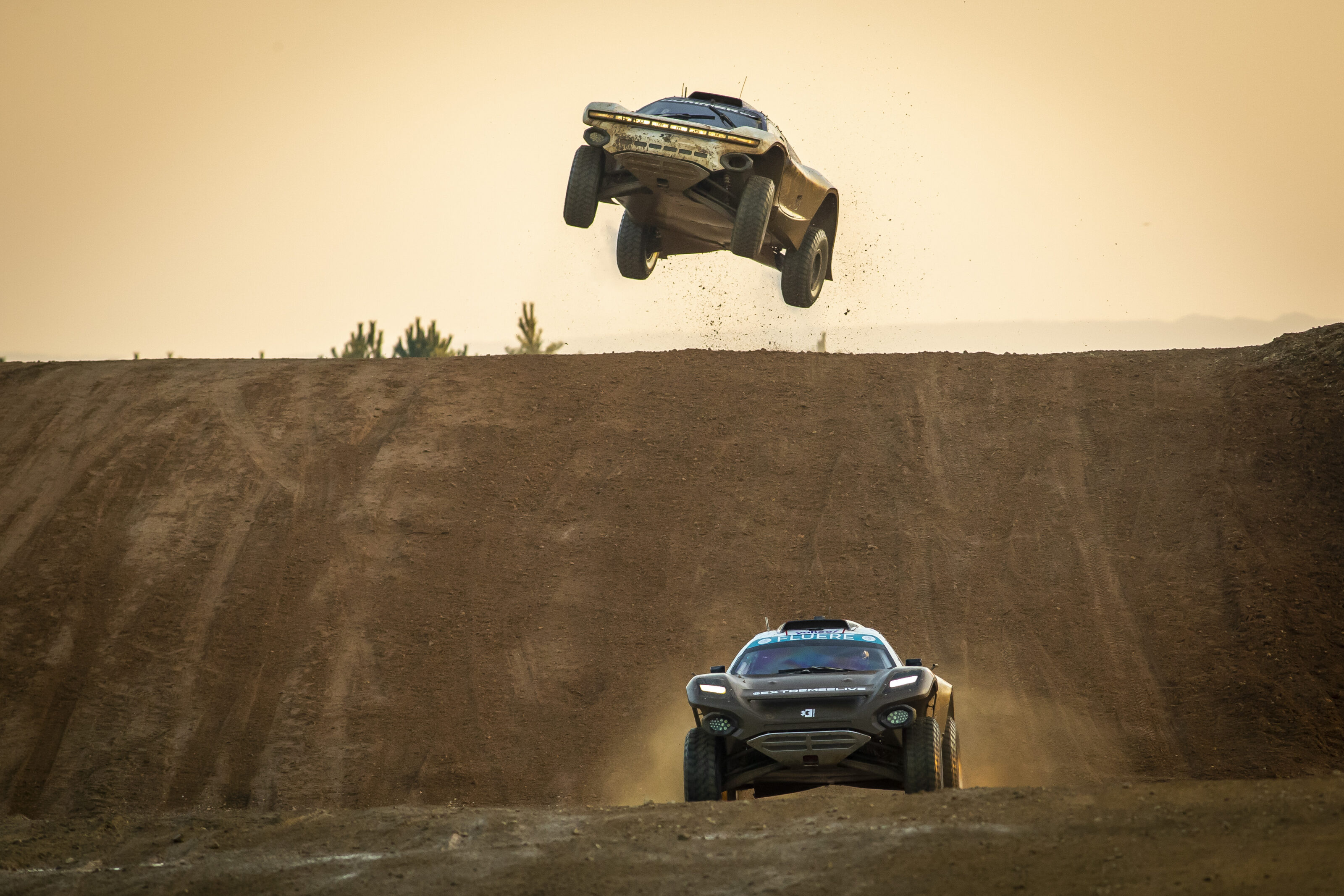
ABT Cupra
The first team to partner with an OE manufacturer, ABT brings together DTM and Formula success with Spanish performance car brand Cupra. Driver Jutta Kleinschmidt was the first and only woman to win the Dakar rally, while teammate Mattias Ekstrom is another driver to bring a World Rallycross championship title to the Extreme E competition.
Acciona Sainz
The Acciona half of this partnership brings significant EV experience as the first team to enter an electric vehicle in the Dakar rally in 2017, while co-founder and driver Carlos Sainz adds a legendary rally background to the team. Fellow Spaniard Laia Sanz swapped two wheels for four when she joined the team with a rich background in off-road motorcycle racing.
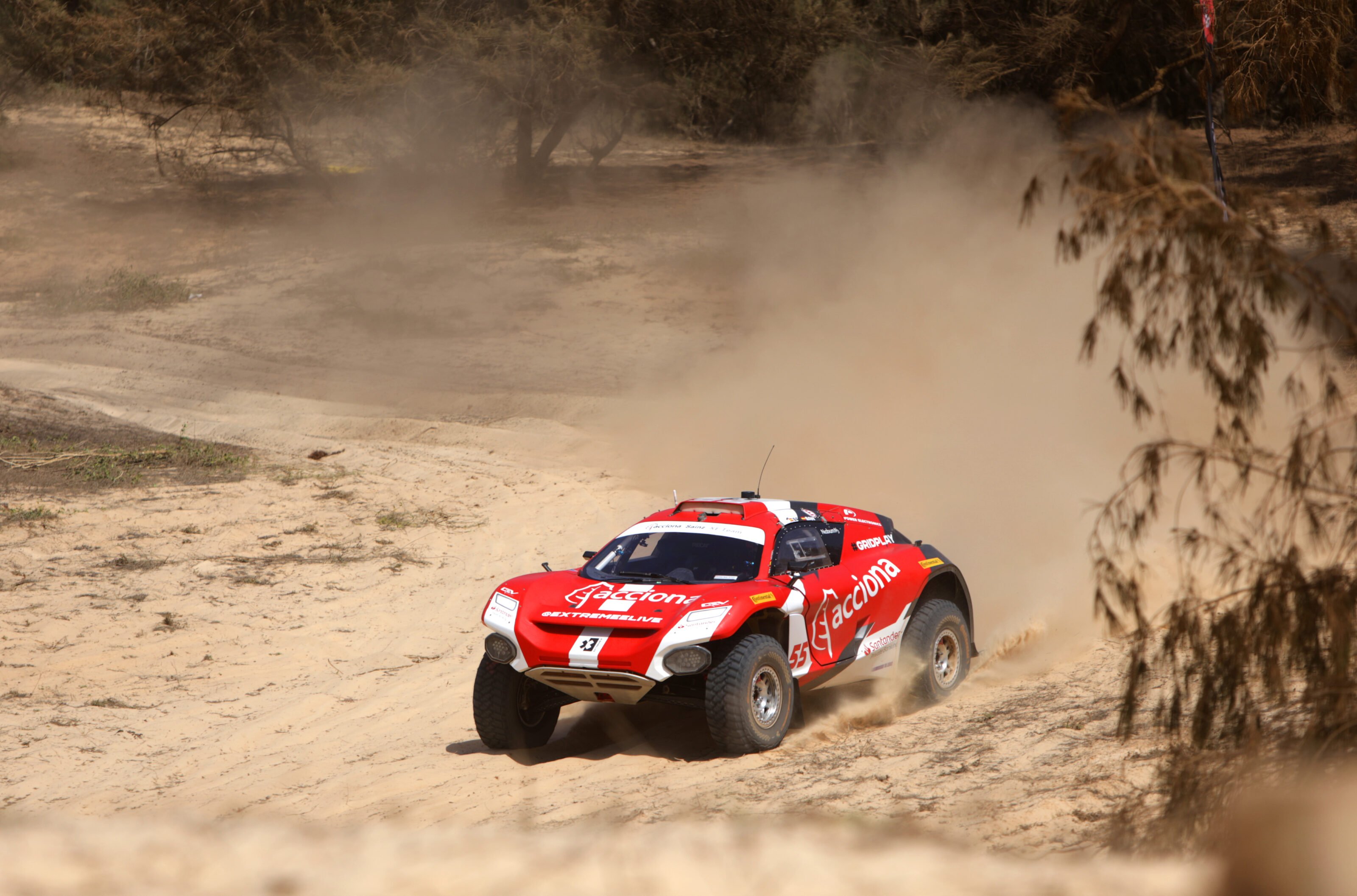
Veloce Racing
Veloce Racing brings some big motorsport names to the Extreme E fold, including Formula E champion and F1 driver Jean-Eric Vergne and legendary F1 designer Adrian Newey as part of the team. Over the course of the year, Veloce swapped drivers in and out of the seat, concluding the season with 23-year-old Brit Jamie Chadwick and South African off-road ace Lance Woolridge.
Segi TV Chip Ganassi Racing
Founder Chip Ganassi brings an impressive portfolio to the series with 20 championships across numerous circuit series. It’s only the second Extreme E team to partner with a road-car manufacturer with a lightly modified shell inspired by Hummer. The driver pairing is comprised of US motorcycle racer Sara Price and six-times Pro4 Championship winner Kyle LeDuc.
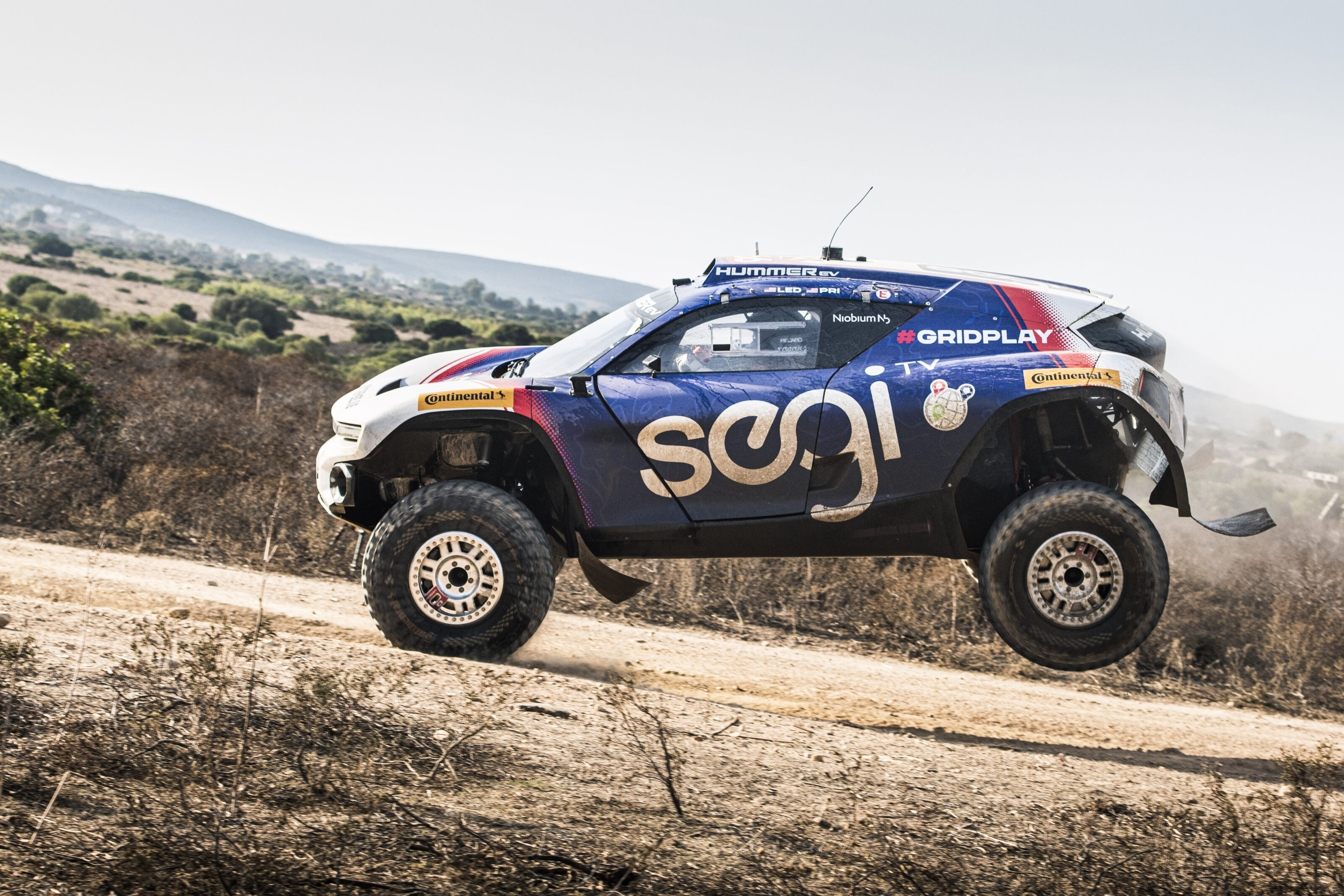
Xite Energy Racing
Xite Energy resurrects the vintage Spanish car brand Hispano-Suiza following the company’s apparent revival and the reveal of the all-electric Carmen at the 2019 Geneva motor show. Christina Giampaoli Zonca brings a breadth of experience in off-road competition alongside Oliver Bennet who has competed in the American, British and World Rallycross championships.
McLaren
Towards the end of the 2021 season, iconic motorsport heavyweight McLaren announced it would join the second season of Extreme E. New Zealand’s Emma Gilmore and US ace Tanner Foust are the drivers. The commitment of the British brand is indicative of the level of interest in this fledgling form of motorsport, and McLaren surely won’t be the last brand to join Extreme E.
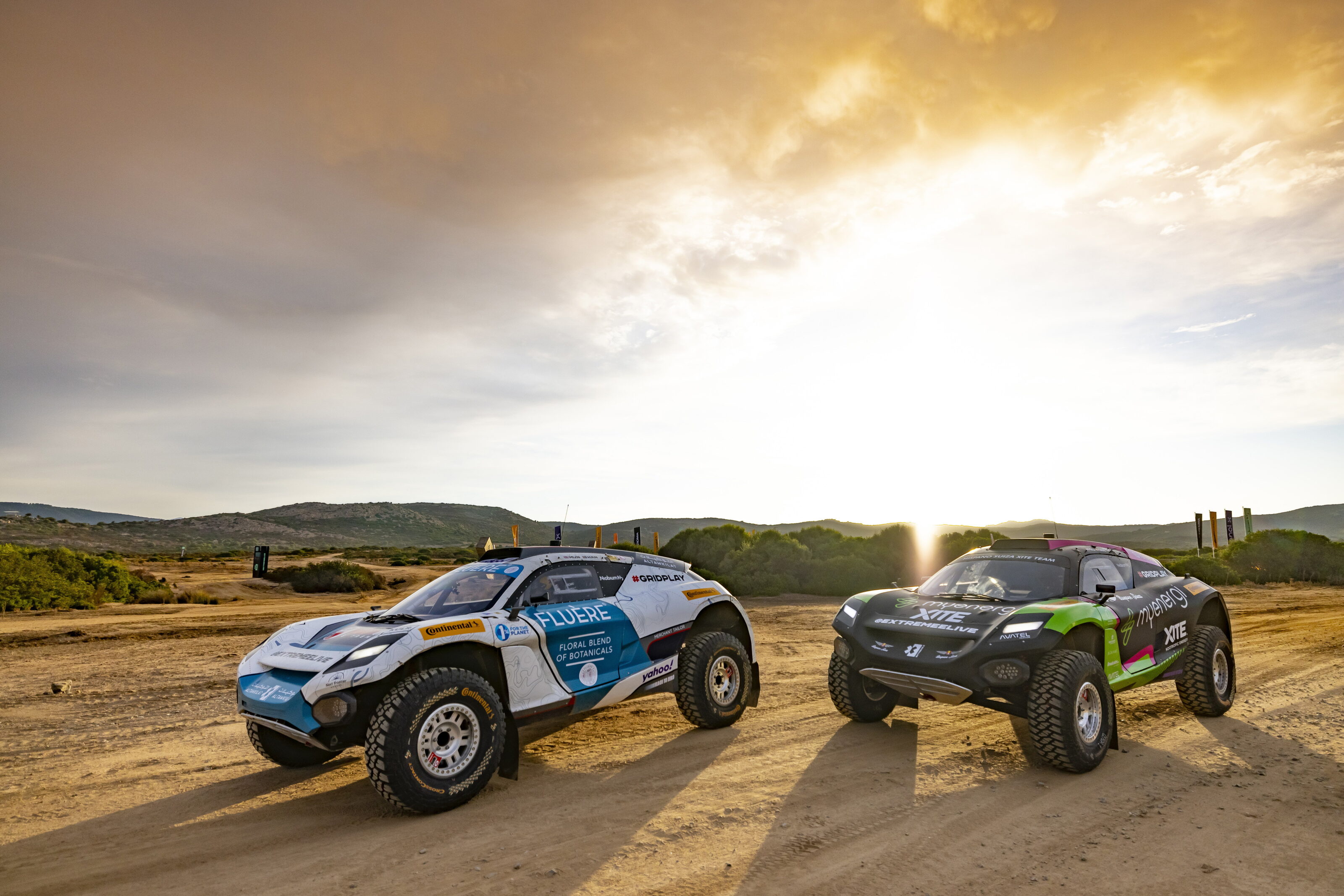
We recommend
-
 News
NewsMolly Taylor wins inaugural Extreme E championship
Aussie Molly and team-mate Johan Kristoffersson take a special place in the history books of motorsport
-
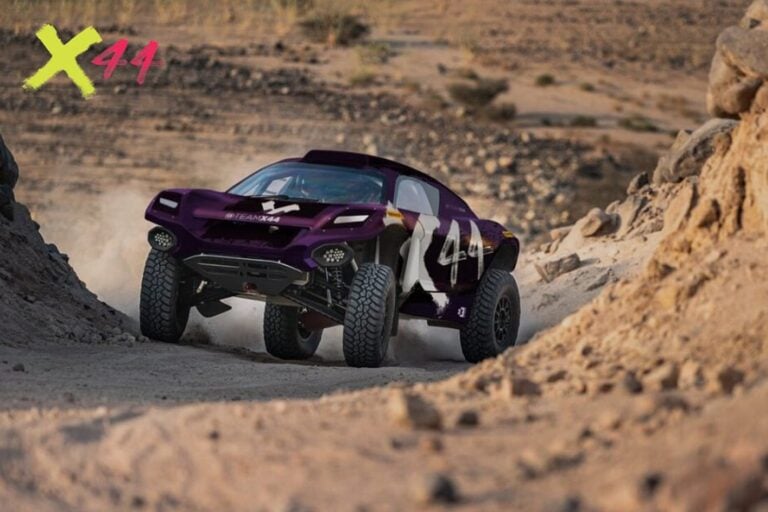 News
NewsLewis Hamilton launches Extreme E team
The Formula 1 ace has embraced a new off-road EV racing series with an aim to highlight the impact of climate change
-
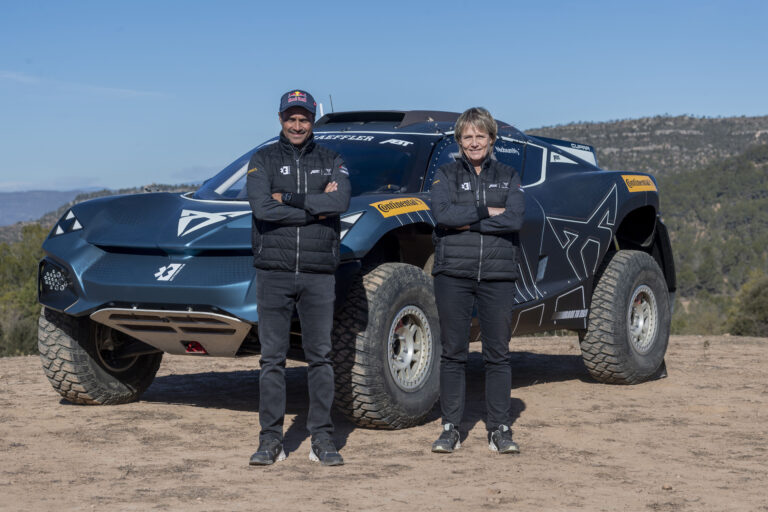 News
NewsDakar winner joins Cupra's Extreme E team
It will be the Saudi Arabian's first season driving in the competition


